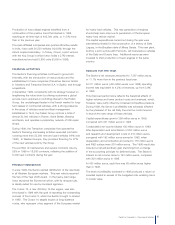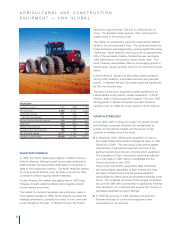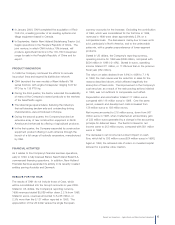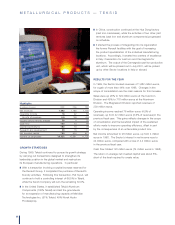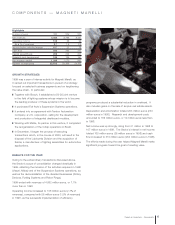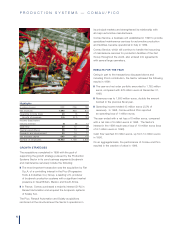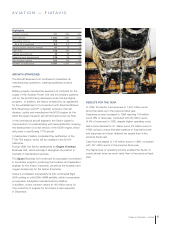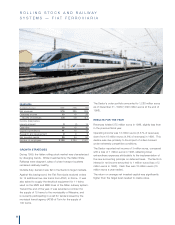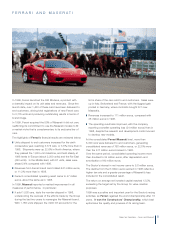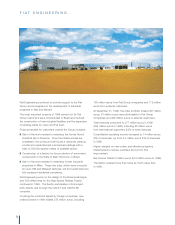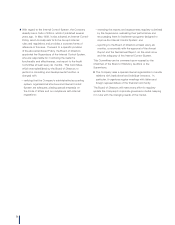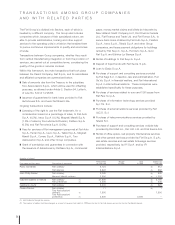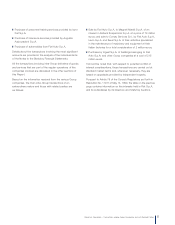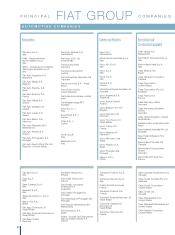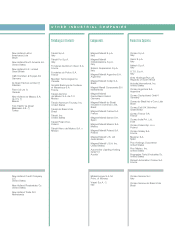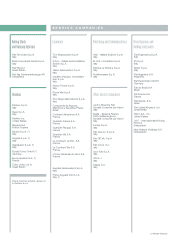Chrysler 1999 Annual Report Download - page 52
Download and view the complete annual report
Please find page 52 of the 1999 Chrysler annual report below. You can navigate through the pages in the report by either clicking on the pages listed below, or by using the keyword search tool below to find specific information within the annual report.
51
Report on Operations – Ferrari and Maserati
In 1999, Ferrari launched the 360 Modena, a product with
a dramatic impact on its unit sales and revenues. Since the
launch date, over 1,400 of these cars have been delivered to
end customers, driving total registrations of new Ferrari cars
to 3,775 units and producing outstanding results in terms of
brand image.
In 1999, Ferrari acquired the 50% of Maserati it did not own,
reaffirming its commitment to use the Maserati models to fill
a market niche that is complementary to its exclusive line of
cars.
The highlights of Ferrari’s financial results are reviewed below:
❚Units shipped to end customers increased for the sixth
consecutive year, reaching 3,775 cars, or 3.8% more than in
1998. Shipments were up 22.6% in North America, where
they passed the 1,000-unit milestone, and held steady at
1998 levels in Europe (about 2,200 units) and the Far East
(420 units). In the Middle East, with 67 units, sales were
ahead 24% compared with 1998.
❚Revenues from Ferrari brand cars totaled 647 million euros,
or 11.3% more than in 1998.
❚Ferrari’s consolidated operating result came to 47 million
euros, about the same as in 1998.
In 1999, Maserati reported a marked improvement in all
measures of performance. In particular:
❚It sold 1,538 cars, triple the number shipped in 1998,
underscoring the success of the efforts made by the Group
during the last two years to reenergize the Maserati brand.
With 1,186 units shipped, the 3200 GT accounts for the
lion’s share of the cars sold to end customers. Sales were
up in Italy, Switzerland and France, with the biggest gain
posted in Germany, where motorists bought 321 new
Maseratis.
❚Revenues increased to 111 million euros, compared with
38 million euros in 1998.
❚The operating result also improved, with the company
reporting a smaller operating loss (24 million euros) than in
1998, despite the research and development costs incurred
to develop new models.
At the consolidated Ferrari/Maserati level, more than
5,300 cars were delivered to end customers, generating
consolidated revenues of 758 million euros, or 22.8% more
than the 617 million euros booked in 1998.
Over the same period, consolidated operating income more
than doubled to 24 million euros, after depreciation and
amortization of 60 million euros.
The Sector’s interest in net income came to 5.8 million euros.
The decline from the 8 million euros earned in 1998 reflects a
higher tax rate and a greater percentage of Maserati’s loss
included in the consolidated result.
The return on average net invested capital reached 12.5%,
exceeding the target set by the Group for value creation
purposes.
1999 was a positive and important year for the Sector’s racing
activities, as Ferrari regained the world championship after 16
years. It won the Constructors’ Championship, which best
epitomizes the quality and prowess of its racing team.
FERRARI AND MASERATI


